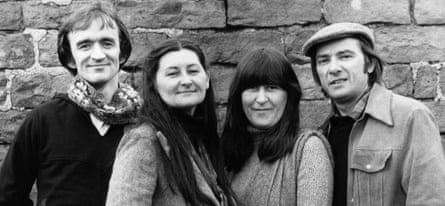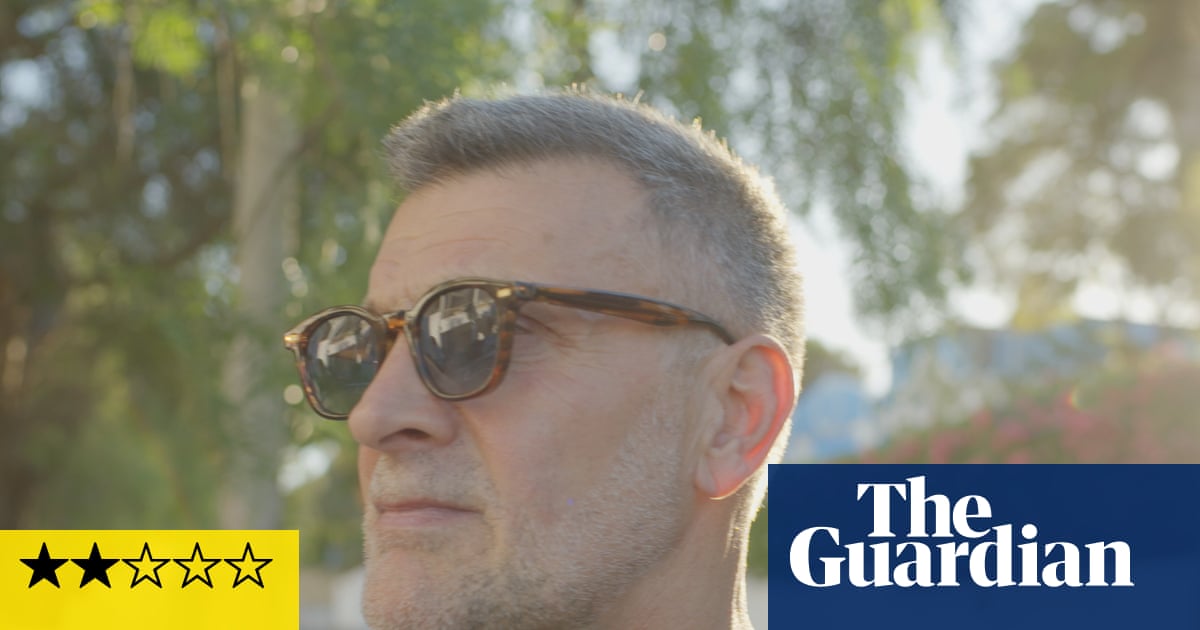Martin Carthy has returned to Scarborough Fair. It’s been 60 years since he first recorded the song on his self-titled debut album, and famously taught it (or tried to teach it) to both Bob Dylan and Paul Simon, when they came to watch the young guitar hero playing in the London folk clubs. Dylan transformed the song into Girl from the North Country, while Simon turned it into Scarborough Fair/Canticle, a hit single for Simon & Garfunkel and the opening track on their 1966 album Parsley, Sage, Rosemary and Thyme.
Carthy’s new version is on Transform Me Then into a Fish, his first solo album in 21 years, released on his 84th birthday today. It now has sitar backing from Sheema Mukherjee, giving it a mysterious, spooky edge. “That’s the kind of a song it is. Try not to be scared of it,” said Carthy, whose sleeve notes when he first recorded the song provided a reminder that parsley, sage, rosemary and thyme were herbs traditionally associated with death. “It finds a home among the weird, oddball songs. I was interested in what Sheema could do with it, and she responded as a wonderful musician will respond …”
He is sitting at his kitchen table in the house in which he has lived for the past 37 years, in Robin Hood’s Bay on the Yorkshire coast, just half an hour’s drive north of Scarborough. It looks like an over-cluttered museum, with every space on the floor, walls or shelves packed with musical instruments, cassettes, pictures, posters and a street sign from Hull, where his wife, the late Norma Waterson, grew up. He now shares the home with their daughter, the folksinger and fiddle-player Eliza Carthy, her two children, and a cat.

He says he has always loved the lyrics of folk songs as much as the melodies, and as he discusses the new album, he delights in telling stories, often illustrated with bursts of song, about the bands and musicians he has played with. Eliza brings in tea, chipping in about lyrics and song titles.
The new album started out as a 60th anniversary tribute to his 1965 solo debut, but didn’t quite work out that way. A handful of songs have been dropped, and three new ones added. But eight originals remain, including Scarborough Fair.
He remembers exactly where he first heard it – at the Troubadour folk club in Earl’s Court, in 1960, where it was sung by Jacqueline McDonald (of the Spinners fame) who told her audience that she had learned it from a new song book, The Singing Island, by Ewan MacColl and Peggy Seeger. Carthy rushed out to buy it and thought: “That’s a nice tune – and of course it was, because Ewan wrote [this version of] it! He would always improve a tune.”
Carthy composed his own arrangement for the song, and was singing it while playing with the Thamesiders at the King & Queen pub, near Goodge Street, when he “found myself looking into Dylan’s face – I had heard about him from Sing Out magazine”. Dylan was there with his legendary manager Albert Grossman, “a folk fan who loved fishing and whaling songs and could sing the pants off anyone, though he never sang in public”.

Dylan said he loved Scarborough Fair, and begged Carthy to “teach me that, teach me that”. A few days later he came to watch Carthy playing solo at the Troubadour, and began visiting the house where he was living on Haverstock Hill, near Belsize Park tube.
The first visit has become a folk legend. It was during the bitterly cold winter of 1962-3, and one of Carthy’s friends had found an old piano abandoned outside Chalk Farm tube and pushed it up the hill to the house. Carthy started chopping it up with a sword he had been given as a Christmas present, so he could feed it into a wood-burning stove – to Dylan’s fury. “I got the sword and Bob came and stood in front of me and said ‘you can’t do that, man, it’s a musical instrument!’ ‘It’s a piece of junk’, I said, and swung a couple of times. Bob was looking up at me and said ‘could I try?’ – and he battered it … it’s all true!”
Dylan failed to master Scarborough Fair. “He wanted to do it with a flat pick though he’s a perfectly good finger-style player,” says Carthy. “He got the giggles all the time and it made him laugh.” So when Dylan later transformed the song into Girl from the North Country, did he mind? “We just swapped songs all the time,” says Carthy. “That’s what people did.”
Carthy was less pleased when Paul Simon did not credit him for his arrangement on Simon and Garfunkel’s version, Scarborough Fair/Canticle. But all is now forgiven, with Carthy saying: “It was grossly unfair [of me] because it wasn’t a pinch in any way … it was written as a tribute because he is clever enough to do that.’” They made up by singing the song together on stage at Hammersmith Apollo in October 2000: “He was doing a tour. He said, ‘Really – you want to do that?’ It was important, so I could lay it to rest and never have to sing that song again!”
He eventually changed his mind about returning to the song, he said, because “I was gifted a lovely version!” In 2014 he was invited to sing on a TV drama, Remember Me, set in Scarborough and starring Michael Palin. When he went to the recording, he was presented with a very different version of Scarborough Fair, “collected by Cecil Sharpe, from Goathland – a village near here on the moors”. That’s the one he recorded for the new album and now sings live “but I haven’t got it quite right yet …”
after newsletter promotion

Other songs of course have stories attached, too. He tells how he sang High Germany back in 1963 and thought he had remembered the words correctly until he checked the English Folk Music Journal and found that for some verses “the words were nothing like mine – I was highly impressed I had invented this stuff”. He still sings his version. As for his own original version of the Ewan MacColl song Springhill Mine Disaster, The Ballad of Springhill, he says that MacColl, a folk purist, “hated what I did, because I was playing guitar – a foreign body!” On the new version, Carthy is backed only by Eliza’s fiddle and demonstrates his new singing voice. “I lost a lot in the lower registers and found something else – and I like it.”
Eliza’s fiddle also provides the new setting for Ye Mariners All, “one of those lovely nonsense songs.” The suitably surreal album cover for Transform Me Then into a Fish shows Martin at the breakfast table in the middle of the ocean, holding his fork like a crazed Neptune.
Carthy has always been adventurous. After recording that landmark album in 1965 he worked with fiddler Dave Swarbrick. When Swarbrick joined Fairport Convention in 1969 – an invitation also extended to Carthy, “twice!” – Carthy joined Steeleye Span instead, playing electric guitar, very loudly, saying “do you want me to turn it down to ‘lounge’ – it’s supposed to be loud!”

After marrying Norma in 1972 he joined the glorious vocal group the Watersons. “I thought eventually someone would teach me to sing, and Norma did,” he says. He went on to be involved in many different projects, including solo work, playing in duos with Swarbrick and with John Kirkpatrick and Eliza, and in groups including Waterson: Carthy (in which he was joined by Norma and Eliza), the brass-backed Brass Monkey, and the gloriously experimental the Imagined Village, which reworked traditional songs for a multicultural Britain, and featured a large cast that included Simon Emmerson, Billy Bragg, Benjamin Zephaniah and Mukherjee.
“I loved it,” says Carthy. “That huge band was so exciting. Sheema seized everything we tossed at her and she encouraged me to take risks.” With the Imagined Village, he recorded a powerful new treatment of the traditional My Son John in 2010, with sitar backing and updated to the Afghan war era with Carthy’s new lyrics: “Up come John and he’s got no legs, he’s got carbon fibre blades instead.” He startled his followers even more by re-working Slade’s Cum on Feel the Noize: “Because I’m a big fan of Noddy [Holder]. What a singer!”
He’s just home from a US tour with Eliza, with shows to celebrate the new album involving both Eliza and Sheema starting on 12 June – while next year promises the return of a new version of the Imagined Village. Carthy may be 84, but he’s not slowing down.

 3 months ago
103
3 months ago
103

















































